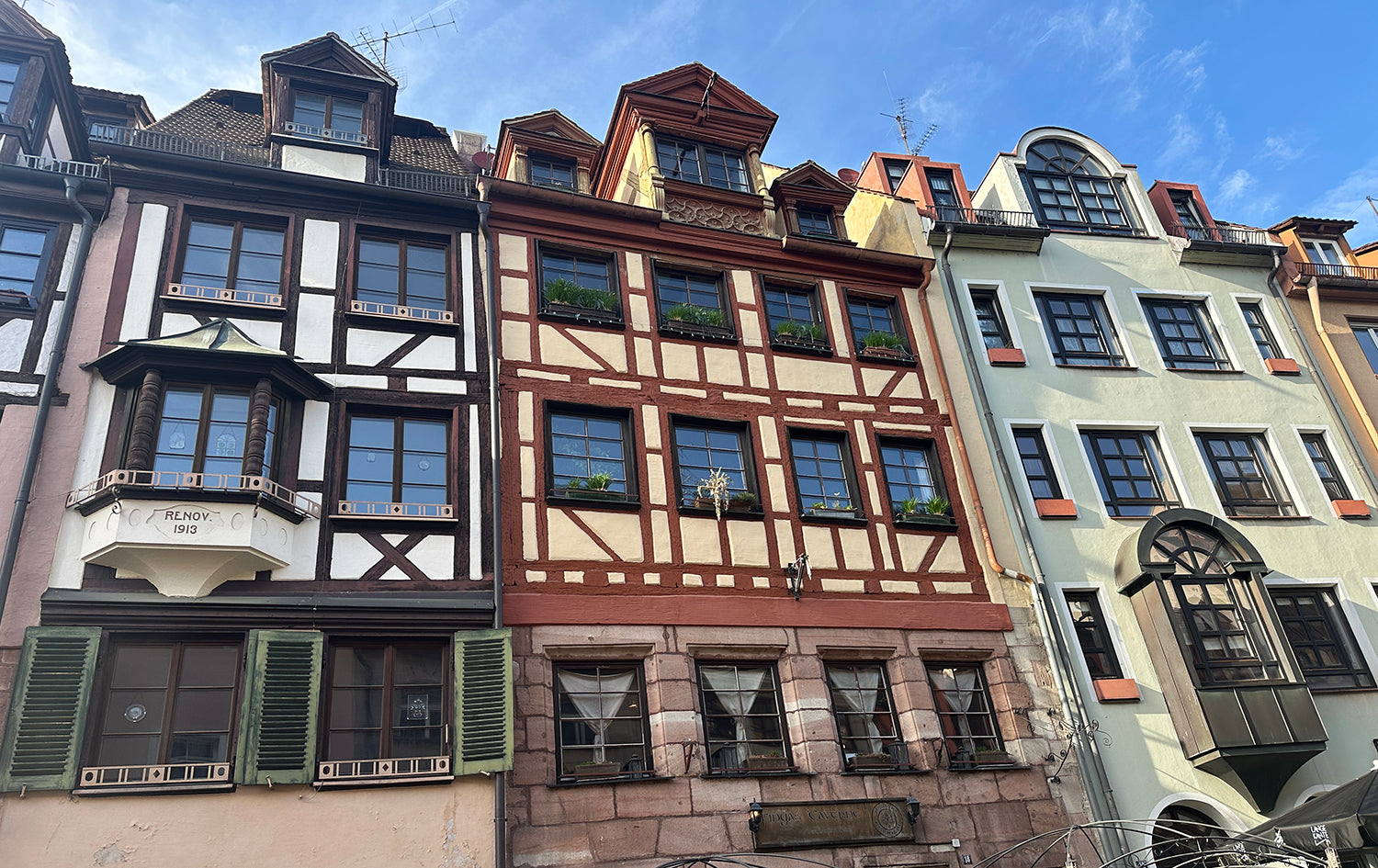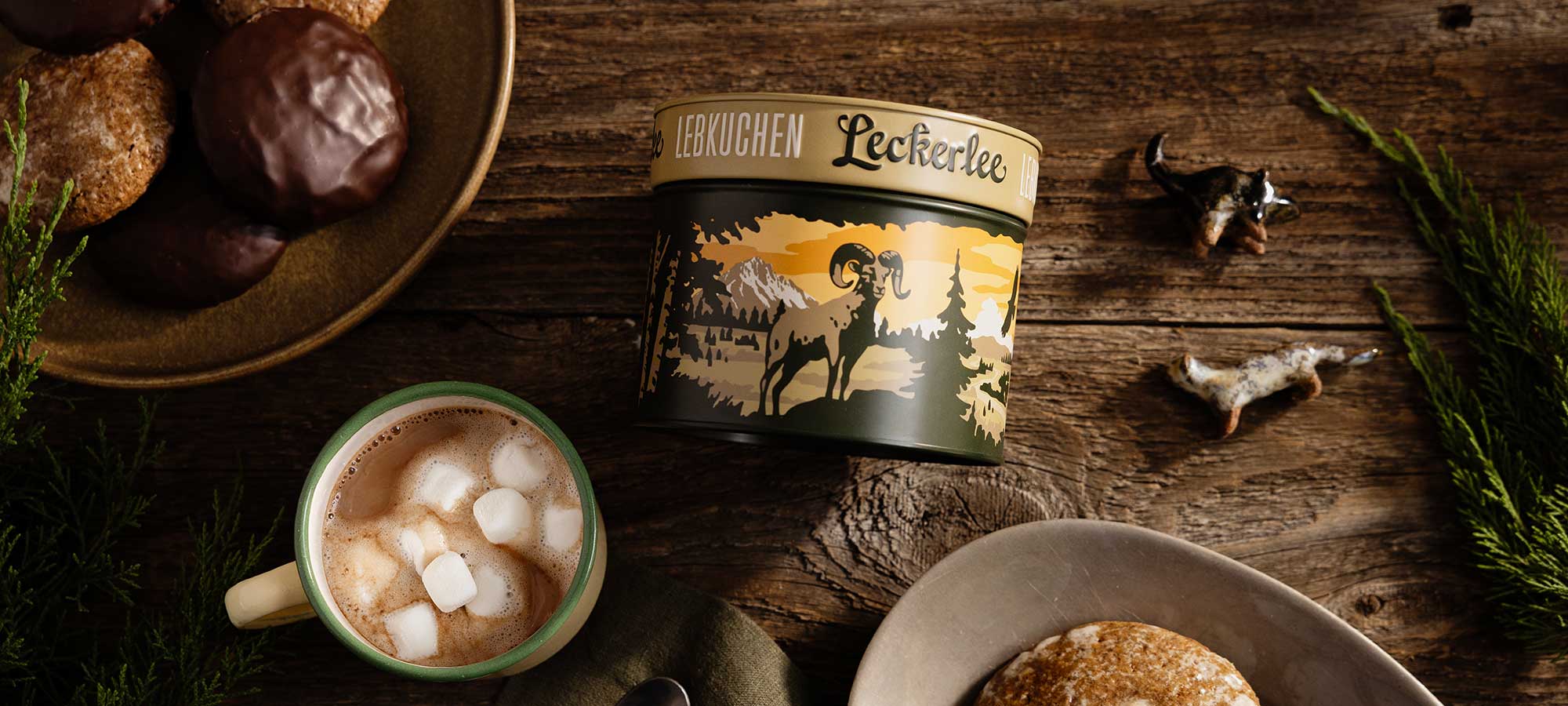Earlier this year, we traveled to Nuremberg, our first time back in 6 years. We were very excited to be back!
Our primary reason for the trip was business, as we're in need of some new equipment. The main manufacturers of specialty machines for lebkuchen production are (naturally) all located in the Nuremberg area. Our first order of business was visiting one of these manufacturers.
 These mechanical engineering and manufacturing companies predominantly make machines and parts for huge companies in various industries around the world. However, they also design and manufacture niche machines for making lebkuchen, servicing local artisanal bakeries as well as industrial customers such as Lebkuchen Schmidt.
These mechanical engineering and manufacturing companies predominantly make machines and parts for huge companies in various industries around the world. However, they also design and manufacture niche machines for making lebkuchen, servicing local artisanal bakeries as well as industrial customers such as Lebkuchen Schmidt.
Here is a machine component for a high-volume industrial producer of lebkuchen:

A Stop at Fraunholz Lebkuchen
Our next stop in town was the Fraunholz Lebkuchen bakery. We last met the bakery’s fourth-generation owner Michael back in 2018, and it was great to catch up and talk shop once again. It turns out his bakery has been using the exact same machine we’re considering purchasing, and his thumbs up was all we needed to make our decision.

(Apparently I was so busy catching up with Michael that I forgot to take any interior photos of the Fraunholz production facility.)
In addition to lebkuchen, Fraunholz also makes macaroons in various flavors, granola, chocolate bars, and more. We happily took home several of these goodies (thanks Michael!).

How Bakeries Handle the Off-Season
It’s always of interest to see how other lebkuchen bakeries manage the off-season. Like Fraunholz, many sell additional products that have a more year-round demand to help offset the intense seasonality of lebkuchen.
Meanwhile, others introduce spring or summer lebkuchen varieties with lighter flavors such as strawberry, orange, lemon, and white chocolate…


…or expand the lebkuchen product line with offerings such as chocolate-covered Backoblaten (the baking wafers you'll find on the bottom of lebkuchen)...

...and lebkuchen cake pops:

While we have added one new flavor (milk chocolate Gianduja-covered lebkuchen) in our 13 year history and will do the occasional one-off bake in the spring, our focus has always been on baking traditional Nuremberg-style lebkuchen in the fall and winter months. Being seasonal presents its own challenges though, and we go back and forth about whether it might make more sense to have a year-round operation.
After a long, intense lebkuchen season in the winter, admittedly the last thing on my mind in the warmer months is eating lebkuchen. But after strolling around Nuremberg’s old town, I started getting a hankering, and soon ended up with a small stash :)

Exploring Nuremberg’s Lebkuchen Landmarks
The Düll Lebküchnerei has been in business since 1934 and has multiple locations. This is their location near the castle:

And Fraunholz’s outpost a bit further down the block:

When in town, I always love to pay a visit to Big Lebkuchen as well.
Lebkuchen Schmidt is the largest lebkuchen company in the world, producing around three million lebkuchen per day during the holiday season. This is one of their retail outlets in the city center, but their production factory is also located in Nuremberg.

In 1988, Lebkuchen Schmidt aquired Wicklein Lebkuchen, the oldest lebkuchen bakery in Nuremberg.

Of course, there’s more to Nuremberg than just lebkuchen. The entire Altstadt (old town) is very walkable. The Kaiserburg (the imperial castle) sits on the northwest border of the historical center.

In 2020, we commemorated the Kaiserburg, as well as the city's Hauptmarkt (main market square), on our Nuremberg Tin:

The Hauptmarkt and Local Food Culture
The Hauptmarkt, which during the holiday season welcomes approximately two million visitors to the Nuremberg Christkindlesmarkt, is much quieter in the spring and summer. Instead of festive stalls selling lebkuchen and glühwein, you’re more likely to find seasonal produce and jams.


Should you find yourself in Nuremberg after hours, don’t dismay: 24-hour-access vending machines have everything you need: Nürnberger sausages, hot dogs, head cheese, and more!

Inspiration at the Spielzeugmuseum
Did you know that Nuremberg is also known for its toys? From medieval doll makers to iconic local toy makers like Playmobil, Nuremberg was once the toy capital of the world. Today, the city remains host to the annual Spielwarenmasse (International Toy Fair), the largest international trade fair for toys and games.
For this reason, I decided to visit the city’s Spielzeugmuseum (toy museum). I’ve always wanted to do a vintage toy-themed tin, so I thought this would be a good place to gather inspiration.

("Spielzeugmuseum Nürnberg (IMG_6747)" by srbanister is licensed under CC BY 2.0.)
The museum holds a fascinating collection of nearly 100,000 toys dating back to the early 20th century, many of which reflect the social and political climate of their time.
For example, this East German plastic building block set from 1959 enabled children to assemble Plattenbau, the prefabricated concrete apartment complexes put up in huge numbers during the Communist era.

Being a fan of the Bauhaus and Wiener Werkstätte design movements, I was delighted to find wooden toys created by its members, including Lyonel Feiniger (houses from “The town at the end of the world” exhibit. Weimar, circa 1920):

...and Emmy Zweibrück (building game, “Colorful city” Vienna circa 1925):

A few other vintage toys from the early 20th century, including this award-winning design of toy soldiers in a chipboard box from the 1903 Nuremberg toy design competition:

Another entry in the 1903 Nuremberg toy design competition, a wooden bowling game:

A carousel from an unknown manufacturer (likely Nuremberg around 1930):

The Nuremberg-based Schuco toy company, the largest toy company in Europe by mid-century, specialized in making toy reproductions of cars as well as plush animals:

Hiking and Brewing Traditions in Franconia
Last but not least, we were able to enjoy a little respite outside the city in Gräfenberg.

A summer tradition there is to hike the Fünf-Seidla-Steig, a 10km (6 mile) hiking trail that connects five Franconian breweries. The idea is to hike from brewery to brewery, drinking a Seidla (a half liter of beer) at each one and enjoying the walk and scenery in between.


Quite lively and boisterous in summer, the trail was still relatively quiet during our spring visit, when only a couple of the breweries were open.



There was still a chill in the air, and the trees and flowers were just beginning to blossom. What a delightful finish to our business trip to Nuremberg.
Next stop: Vienna!
FALL PRE-ORDERS
We are less than 90 days and counting from the start of lebkuchen season...are you ready?
Pre-order now and save 15% on all products! Select the earliest ship date in mid-October or a later one that suits you during the holiday season. For a limited time, no code needed. You may change or cancel your order at any time.







